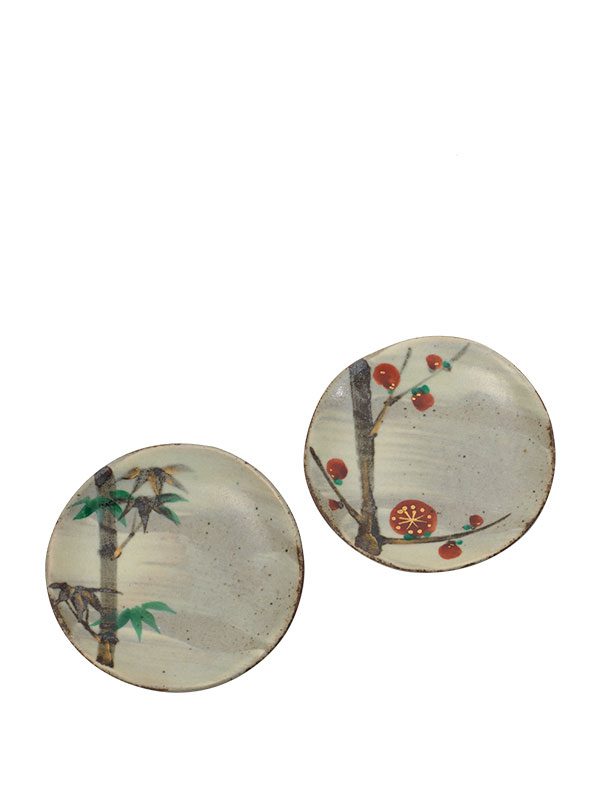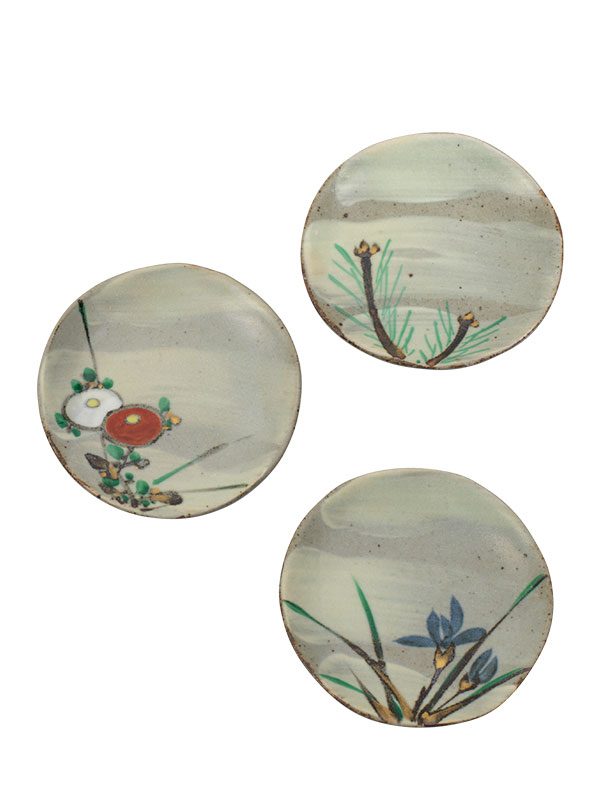Five enamelled stoneware dishes by Kobei Kato VI
Japan, Showa period, 1926 – 1989
A set of five stoneware dishes, each deliberately somewhat roughly potted, the irregular rim turned up slightly, the base with four circular unglazed patches. The dishes are covered in a streaked beige glaze and beautifully enamelled with grasses, bamboo, flowers, and prunus blossoms. Some of the details are gilded. Each dish is signed on the base. The dishes are all marked on the base “ko” and are contained within their original wooden storage box, tomobako, which has two inscriptions on the outside reading Egawari, meimeizara, Kobei-gama, with seal Kobei-gama (A set of dishes, each decorated with different motifs, Kobei-gama Kiln, with seal Kobei-gama kiln).
SOLD
Kobei Kato VI (1917 – 2005) comes from a long line of potters from Tajimi in Gifu Prefecture, Japan, located in the Mino area, producing the well-known Mino ware. He was the son of Kobei Kato V, who lived from 1893 – 1982 and was designated a Living National Treasure artist in Heisei 7 (1995). The kiln was founded in 1804 by the first Kato, who was one the most celebrated visionaries of Japanese ceramics and pottery. He began working and rejuvenating the lost art of ceramic making. The Kato kiln is particularly known for its imitations of Persian lusterware. The present-day Kato is the eighth generation of this family of potters.


